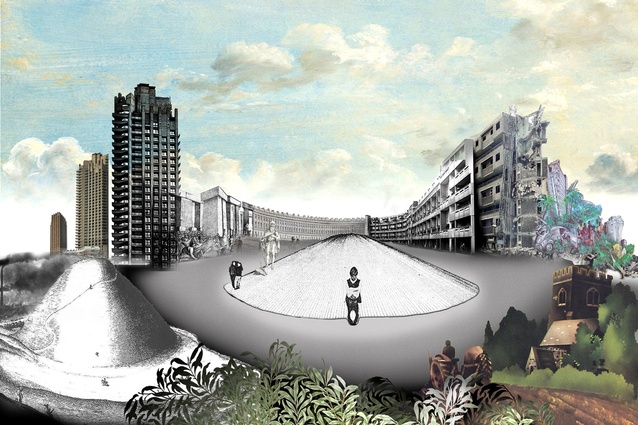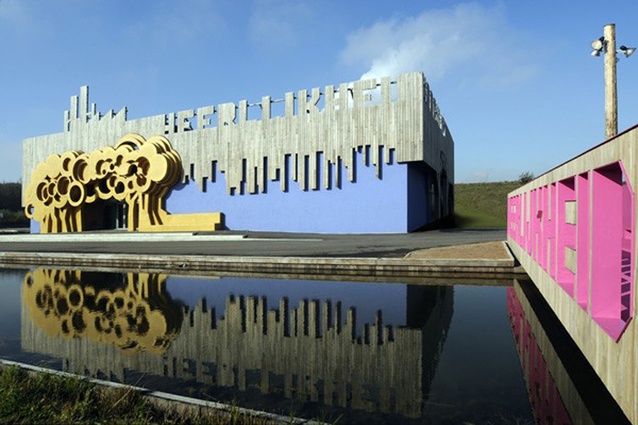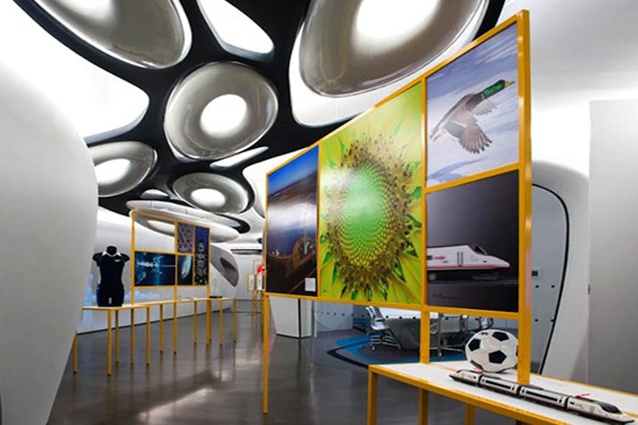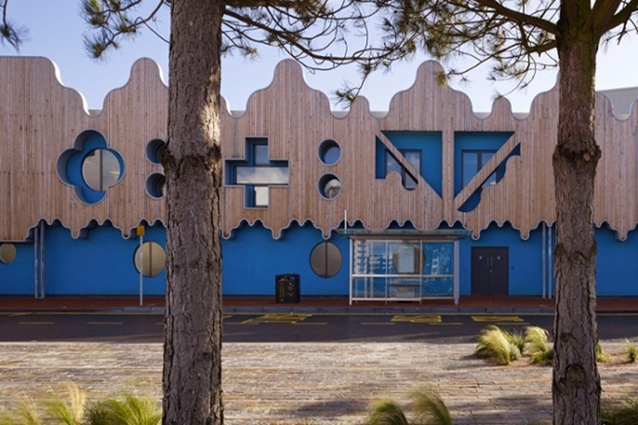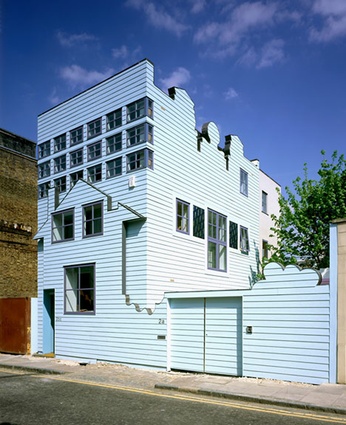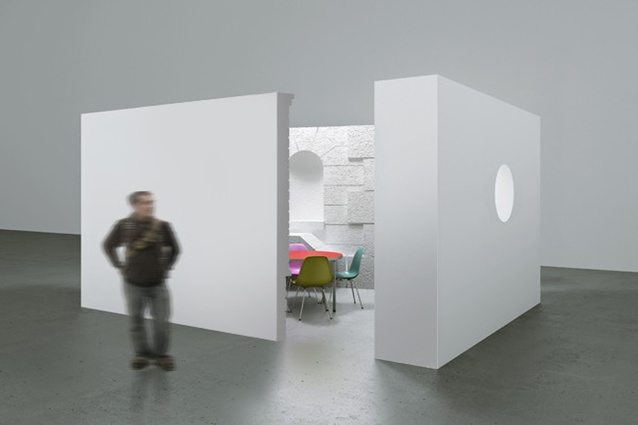Sam Jacob: an unconventional architect
Sam Jacob is possibly one of the most unconventional of architects. He certainly bamboozled a few architects during the NZIA in:situ conference with his inquisitive conceptual explorations, devising new ways to think about architecture. In this interview with New Zealand architectural designer Sarosh Mulla, ideas of taste, escaping mainstream architecture and the closure of the FAT office are frankly discussed.
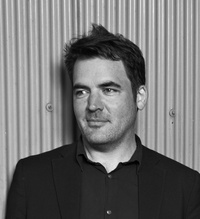
Sarosh Mulla: I want to start with a question that came out of your talk [given at the NZIA in:situ conference] about how your projects are about fun because it struck me that there’s a difference between being fun and being funny. Is that something that’s pursued actively or is it something that comes out because of your personality?
Sam Jacobs: Both, I think, and it’s such an unarchitectural thing to do. Not that the projects are funny. They’re never supposed to be a joke but, I guess, we want to do them in a different mode to the way that architecture is normally done, which is quite serious.
It has this aspiration to be serious but, actually, life is a much broader church than the face of corporate entities or the tradition that often characterises housing development, or the seriousness that comes from things like modernism or raw classicism.
It’s often to do with trying to break that down a little bit more and to play with the things that architecture could do. I’m interested in the idea of communication and how buildings can directly talk to you and, then, amplifying that.
SM: So does it come back to making the projects accessible to people who don’t come to them with specific architectural knowledge?
SJ: Sometimes. Most of the projects are actually community-oriented projects, so it is social housing done with an incredible amount of consultation with the eventual residents. It means that there’s a dialogue between all of the expectations: between a group of residents who have a very traditional idea of what kind of housing they think would like to live in or developers who have a much more sophisticated aesthetic of contemporary metropolitan living. Once you’re all in serious dialogue, no-one is going to be happy but a productive compromise emerges that those parties alone wouldn’t have imagined would be possible at the beginning of the project.
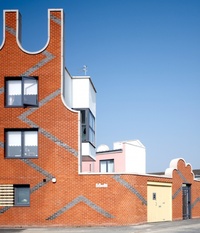
It’s a result of really strong dialogue with the constituents of the projects, basically. I think that’s important and, for architecture, it challenges this idea that aesthetic or taste is a singular thing and that there’s good and bad taste and architects have good taste and everybody else has bad taste.
Taste is actually a highly charged political thing and contained within these ideas of good and bad taste are things to do with class and culture and value. It could be the road for architecture to have a direct social and political agenda, which is certainly present in our New Islington project in Manchester, which plays with lots of traditional iconography but, in a way, is completely untraditional.
SM: Looking at your projects, I instantly see that there are parts of the post-modern but that approach seems to almost draw on a critical regionalism, where there is a specific kind of local politic happening within a different aesthetic language. Do you actively try to meld these opposing approaches in your practice?
SJ: In a way, I think it’s the thing that always happens in architecture. Architecture is the point of connection between the incredibly local and the most global. There are very different constituents involved in the life of a project or a building or a city from the people who invest, to the politicians who want it to do something else, to the people whose ways of life it affects.
Architecture is the place where these things inevitably come together but it’s not always the place where those things are thought about. I think that, in terms of mainstream architecture, it’s not something which is addressed but it is addressed more and more by younger architects.
It was so interesting to see your session [at in:situ], to see the parallels with young architects in Britain who are actually thinking in exactly the same way about how to make a big difference with a small project. How can you work in different ways? How can you escape the traditional constraints of the profession? That, in itself, is a way of rethinking the process and the way in which architecture engages with the community.
SM: Do you go into projects with one idea about what you are trying to say and that then let that build upon itself as you go through these larger questions?
SJ: Well, you must have also found that the design was one part but the actual politics of making must have been the real project; it’s putting everyone in the right place at the right time. That way you actually have to invent the organisation. I think that’s really interesting.
SM: You must have found that when you’re doing these social housing projects, there’s a whole range of reasons that people want to be involved and how they want the project to be. Is that something which you can easily take onboard or is it something that you wrestle with and then come to terms with?
SJ: I think it’s always a wrestle. It’s really important but it is also painful. There is also a difference between consultation and engagement, which seeks to ease the passage of something into the world. Developers are basically trying to get everyone on board so they can build whatever they want to build. Another way of thinking about it is to try and make everybody happy and that’s not right because it will not make everybody happy.
SM: It’s very clear in New Zealand that getting published in something like Dezeen is a fantastic springboard out into the wider world, but it’s also an intense scrutiny and an exposure that you have to get used to. What have the lessons been for you in regularly writing for those sorts of publications, where people critique your ideas and then feed them back to you?
SJ: Who are these people who comment? FAT [Fashion Architecture Taste] projects would go up on Dezeen and the comments were just, “I just wish these people would stop this shit.” That’s not even a comment. I think the response to design projects are worse than to the comment pieces.
SM: Is that because you need to actually offer a reasoned opinion when challenging a comment piece?
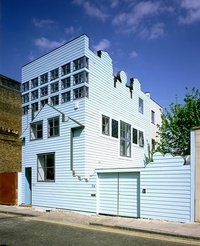
SJ: I think you actually have to read it. I’m not sure how many people actually read anything on Dezeen, even the comment pieces. I think they just scroll through and think, “I hate that or I love that.” It’s a very visceral, immediate response but it’s not particularly considered. When Dezeen started having a comment piece, I wrote the first one and it was about Dezeen. It was about how terrible Dezeen is for contemporary architectural culture but, also, about how this is the media we deserve. The difference between being published on Dezeen to being published in a British architectural journal is amazing.
It is a very global culture now, certainly in architecture and design. Even at an event like this [in:situ], there are so many people from different places at the same time, so many of the concerns are quite interesting, I think.
SM: Some of your clients, like the BBC or various councils, have done some really adventurous projects with you. Is this something you had to pursue through the process or did you talk the project into existence by just finding interesting people in those organisations?
SJ: There is a generation of smooth-talking RCA graduates who diagram their way into convincing anybody of anything. That’s definitely not anything we were capable of doing or interested in doing. We were really lucky because we very slowly developed an attitude and approach, and an aesthetic or design language. But it’s certainly not everybody’s thing.
Actually, we are always quite antagonistic towards the architectural profession about attitudes towards the built environment in general but, in certain circumstances, it’s exactly what people need. There is something about being engaged and I am a big believer in imagination and vision but, also, a big believer in the real world and this relationship between those two things.
A really important thing to try and consider as an architect, for me anyway, is not to become a theorist or not to become obsessed with the practicalities. In a way, those kinds of things can play off one another to realise the potential of both.
SM: They can make it a richer project for both sides.
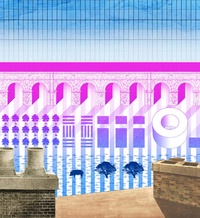
SJ: I think that’s useful. That kind of constant engagement with not just the profession but also with the world of the built environment, so municipal authorities, particular people or departments or developers, having conversations about what are the problems which these different parties face and what are the ambitions and what are their frustrations? It’s easy for architects to sit around going there’s something wrong with developers or with local authorities but, actually, there are as many frustrations in all of these other areas as well.
We would like much more discussion between these things that are thought of as opposites or competitive or just belonging to different worlds. It also creates opportunity. There was a time in Britain where there was a lot of money going into regeneration of cities, especially in the old, industrial north in places like Manchester, Middlesbrough and Cardiff. A lot of our projects in Britain happened because they had Government and European money going into them and they were often the first part of bigger regeneration projects.
SM: Is it finding the nugget of gold in what is otherwise a really prosaic set of prescriptive requirements?
SJ: Yes and that was when the big crash happened so, actually, in a lot of these places, it’s just the one thing on its own in a weird way.
SM: I was thinking of FAT closing its doors and I thought that it was analogous to Jerry Seinfeld leaving his show at the peak of its popularity. It must be terribly difficult to leave something when it is successful and to say, “That’s enough, I’m going to go and do something else.”
SJ: When we started, we had no stated ambition to be an architectural office. We didn’t think that we would build buildings. That wasn’t not on the agenda in the mid-90s in Britain, partly because there was a recession and partly because there was no culture supporting young architectural offices. There was nothing for us to follow, so we thought, “Maybe we’ll do a magazine or a series of projects in the city” but not that we would start as an office. It was a loose collective so it’s origins weren’t traditional in that sense. It became an architectural office at some point but, at heart, we always thought, ”Either we are an office, in which case we’re basically a bureaucratic entity, or we can think of it as a project or as an idea” and, if that’s the case, then maybe we have completed that idea.
We felt we wanted to be truer to the idea of FAT, rather than the reality of what FAT had become. I think that’s quite unusual in architecture, normally you only stop if you slide or you go bust.
SM: I’m still part of a design collective that was formed in the same sort of way, which gives you the flexibility and freedom to do really interesting things. But, I also wonder if the progression to completing the idea then leaves you at a moment where you think, “What’s the next idea or is the next idea already here?”
SJ: That was another reason to close FAT. The idea of FAT emerged at a very particular moment for us; we were young. It was our first idea and we’ve been pursuing that for 20 years. In some ways, we all grew, changed and developed and I feel like I wouldn’t necessarily want to make that kind of work for the rest of my life.
FAT is always associated with post-modernism and one of the things I want to escape from is the cliché of what FAT became in a sense. I believe in a more open aesthetic project so I’m quite interested in finding other ways of resolving the same sets of interests.
Natalie Bradburn’ profile of Sam Jacob, published in Architecture New Zealand (03.2015) here.
A full list of the speakers who attended the NZIA in:situ conference here.

